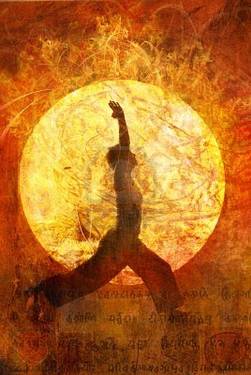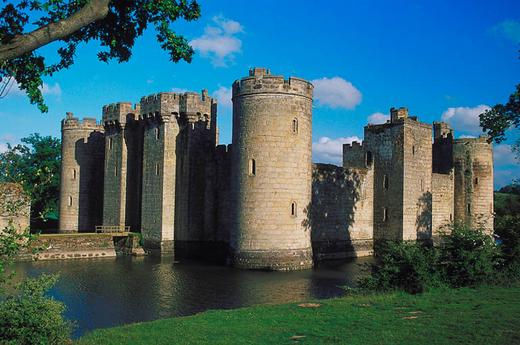Imagine it’s 800 AD. You’ve been hunting and minding your own business. Suddenly out of nowhere you hear a bellow. Someone on a horse is charging you down. You’re equipped with the knife you were just skinning a boar with. What do you do? Run? Freeze in fear? Pray? Well, there is probably little you could do in such circumstances, as a knife against a hunter on horseback made for a considerable foe, but as with all weaponry, necessity is the mother of invention and the necessity for people to fend off such attackers eventually led to the invention of the polearm.
A polearm is exactly what it sounds like. It is an extension to the arm using a pole, or a stick, or a branch, which is equipped with some form of weapon. Generally a polearm was made of wood and had a metal head. Historically it was a great weapon for foot soldiers because the length meant that it could be used to increase swing and momentum; so a strike that was swung had more power behind it and dealt more damage.
Originally the polearm would have been a peasant weapon because they were simple to make. Peasants would attach to a long pole anything they could get their hands on. Implements included simple knives, hammers and axes. Eventually these developed to become the poleaxes, halberds, pikes, glaives and naginatas that we are aware of today. A halberd for example is simply an axe with a spike attached, making a formidable weapon; while a glaive was a simple knife with a single edged blade attached to the pole.
Vikings were particularly fond of Broad Axes and these were incredibly deadly. They sported a heavy crescent shaped head and were usually around 6 ft. in length (surprisingly short for a polearm whose length can vary between 4 ft. and 18 ft.). The use of the Broad Axe spread throughout Scandinavia and Britain.
Other deadly polearms incorporated hooks so that riders could be yanked from their steeds. These were highly versatile and effective weapons against horseback riders. Taking out a knight was an incredible coup, given that every knight with his expensive armor, weapons and horse, was worth ten foot soldiers. A polearm certainly helped to keep the playing field, or the battlefield in this case, level!
As polearms developed, soldiers increasingly had to be trained to use them. There were specific maneuvers that could be utilized such as a strike, a swing, a cleave and a poke. Efficient use of polearms in battle required teamwork; all the bearers would stand in a line and create an effective barrier against their attackers. Given that polearms were no use for combat that was up close and personal, foot soldiers were also trained to use knives, daggers and swords.
All of this wonderful combat history is reflected in a number of areas today. Anyone that has ever played some kind of Dungeons and Dragons, or Medieval war craft game either on a gaming console or online will have come across the joys of using polearms; think Torchlight, Chronicles of Blood and Runescape. In Final Fantasy for example, Dragoons, Samurai and Warriors use polearms for quick strikes. The number of maneuvers that can be employed increase as the player’s skill level grows, so that players can use ‘skewer’, thrust and sweeping moves. World of Warcraft also has polearms included in its weaponry. Monks, paladins, druids and hunters can use them. The attacks are slow but they cause a large amount of damage, just as they would have in reality centuries ago.
Polearms are also still evident in modern day martial arts. The Quandao, or Kwan dao, was once a mighty military weapon weighing over 100 lbs., with a deep and curved reclining moon blade. These days they weigh a great deal less, but still come with a vicious counterweight used for stabbing. Weapons like these once required a great deal of physicality and strength but have now evolved into a martial arts weapon weighing considerably less. Similarly, the Ji with its spear and crescent and a double edged blade, appears equally vicious in martial arts. The nagamaki was a Japanese pole weapon used by Samurai against attackers on horseback, had a short grip with a long blade, and is still used in martial arts training today.
There is absolutely no need to assume that polearms are the preserve of men only. On the contrary! In Japanese media, the polearm is a favored weapon for women. The naginata …. For example was the preferred weapon of female samurai warriors, Yamato Nadeshiko, who could protect her house and servants while her samurai husband was away. It’s a great weapon for women that can be used at a distance; say to keep men at arm’s length, or to prevent intruders from crossing a portal or doorway. It is speculated that Empress Jingo-kogo (AD 169–269) may have led an invasion of Korea while pregnant with the future Emperor Ojin and battled with a naginata.
In terms of gaming it’s really interesting to note that women aged 25 years or older made up the largest segment of PC game players overall in 2008, accounting for 54.6% of all gameplay minutes in December of that year. Women are an increasing demographic on World of Warcraft, for example, and contrary to popular belief, make up nearly half of all current game players. That’s a large number of potential female polearm wielders, so watch out guys!
If online warcraft is not your bag but you enjoy roleplaying, you may well be tempted to have a go at Polearmball. This is a team sport for men and women alike and uses a specially designed polearm that can be used as a projectile and a jousting pole. It can be played on a court, field, or any natural terrain. Polearmball can be played equestrian style, or in the water, and there is even a version that is played on ice. The version of polearmball that is played on foot and on a court or field gives everyone, men and women, tall or short, an even chance as all jousting is undertaken on the ground. It’s a great way to meet people and brush up on your team working skills. Give it a shot. Literally!
Jeannie A is a slightly eccentric typical tea drinking and biscuit munching Brit, who listens to a lot of rock music. She has a PhD in modern and contemporary British social and cultural history and is an ex-University lecturer. Jeannie is a writer in the broad sense of the word; researching and writing website copy, blogs and articles for a wide range of websites and magazines. Her favourite authors include Stephen King, Mark Billingham, Wilkie Collins, Tana French and Susan Fletcher. Under her pseudonym Jeannie has written a number of horror and short erotic stories. She is currently working on her first novel, which seems to involve a large number of trees. In her spare time Jeannie is a soup maker extraordinaire who likes to listen to the voices in her head, engage in tribal dancing and belly dancing and spend time with her husband and dogs. Jeannie can be found on Facebook https://www.facebook.com/pages/The-Writers-Barn/390815607656543
and on her website at http://www.thewritersbarn.org.
Polearms
Written by Jeannie



